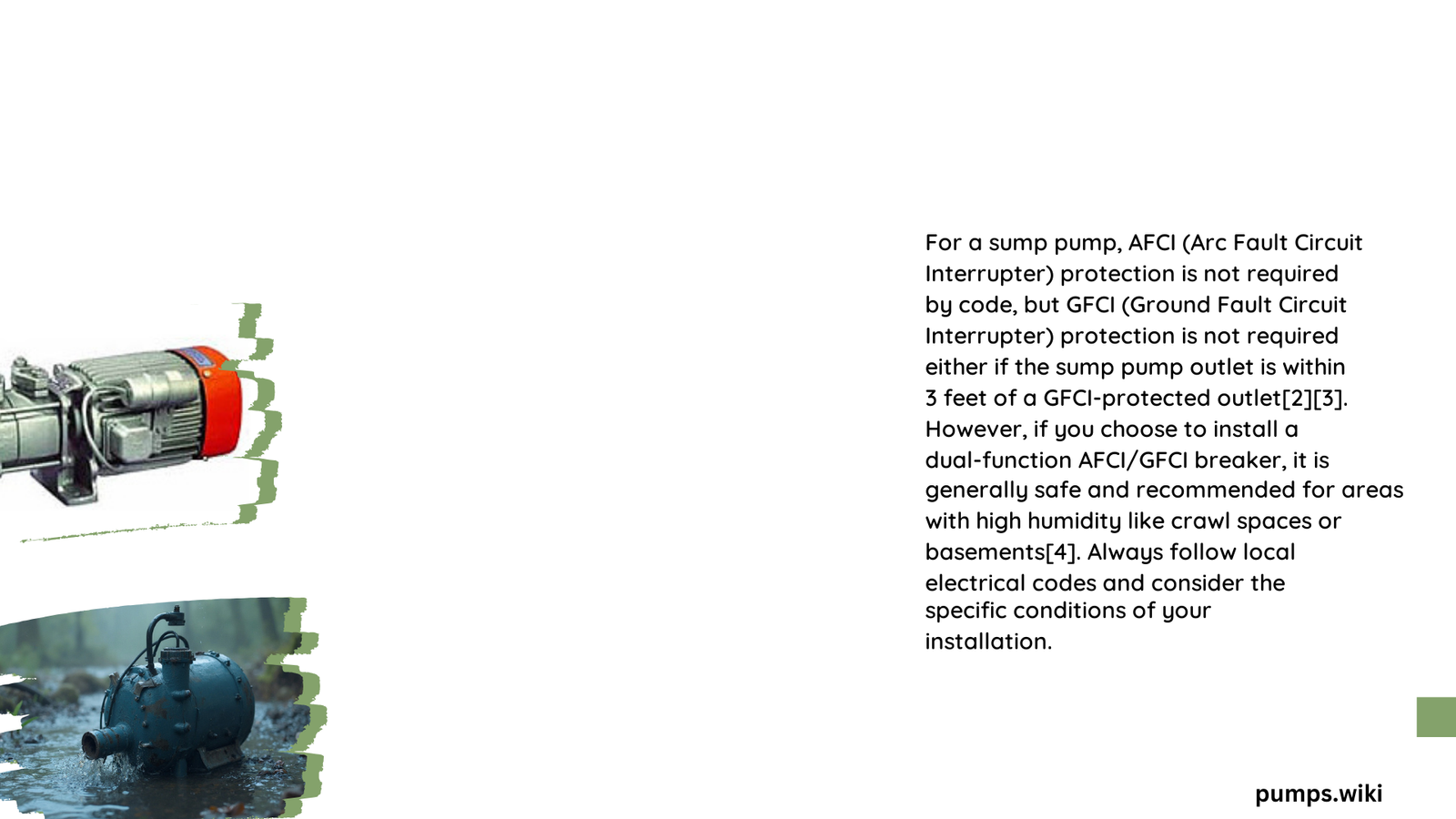Sump pump electrical safety is critical for preventing potential hazards and ensuring proper functionality. Understanding AFCI and GFCI requirements helps homeowners protect their property from electrical risks, ground faults, and potential water damage. This comprehensive guide explores the intricate details of electrical protection mechanisms specifically designed for sump pump installations, addressing code compliance, installation techniques, and critical safety considerations.
What Are AFCI and GFCI Protections for Sump Pumps?
AFCI (Arc Fault Circuit Interrupter) and GFCI (Ground Fault Circuit Interrupter) are essential electrical safety devices designed to prevent electrical accidents. While they serve different purposes, both play crucial roles in protecting sump pump electrical systems.
Key Differences Between AFCI and GFCI
| Protection Type | Primary Function | Typical Application |
|---|---|---|
| GFCI | Prevents ground faults | Water-related environments |
| AFCI | Prevents arc fault fires | Residential circuit protection |
Why Do Sump Pumps Require Specialized Electrical Protection?

Sump pumps operate in moisture-rich environments, making them particularly vulnerable to electrical hazards. The National Electrical Code (NEC) mandates specific protection mechanisms to ensure safe operation.
Critical Safety Considerations
- Water Exposure: High moisture increases electrical risk
- Continuous Operation: Potential for electrical wear and tear
- Underground Installation: Limited visibility and accessibility
What Are the NEC Code Requirements?
The 2020 National Electrical Code provides clear guidelines for sump pump electrical protection:
- GFCI Mandatory Protection
- Required for pumps rated 150 volts or less
- Applicable to single and 3-phase systems
-
Must be within 12 inches of attachment plug
-
Circuit Rating Specifications
- Typically 20-ampere dedicated circuit
- 12-gauge or 14-gauge wire recommended
- Proper circuit breaker sizing essential
How to Install GFCI Protection for Sump Pumps?
Recommended Installation Steps
- Power Disconnection
- Turn off main electrical panel
-
Verify zero voltage with tester
-
Device Selection
- Choose GFCI receptacle or circuit breaker
-
Ensure compatibility with existing system
-
Wiring Procedure
- Connect black (hot) wire to brass terminal
- Connect white (neutral) wire to silver terminal
- Secure ground wire to grounding terminal
What Are Potential Challenges in GFCI Installation?
- Limited accessibility of electrical connections
- Incorrect wire connections
- Incompatible circuit ratings
- Moisture interference
Cost Implications of GFCI Protection
Estimated Expenses
- GFCI Receptacle: $20 – $50
- GFCI Circuit Breaker: $30 – $70
- Professional Installation: $100 – $300
Professional Recommendations
- Annual electrical system inspection
- Use weatherproof GFCI devices
- Consider backup power solutions
- Maintain proper grounding
Maintenance Tips for Electrical Safety
- Test GFCI functionality monthly
- Inspect for corrosion or damage
- Ensure proper ventilation
- Keep area around sump pump dry
When to Consult a Professional Electrician?
- Complex electrical modifications
- Persistent tripping of GFCI
- Signs of electrical degradation
- New sump pump installation
Conclusion
Proper AFCI and GFCI protection for sump pumps is not just a recommendation—it’s a critical safety requirement. By understanding and implementing these electrical safety measures, homeowners can significantly reduce risks associated with water damage and electrical hazards.
